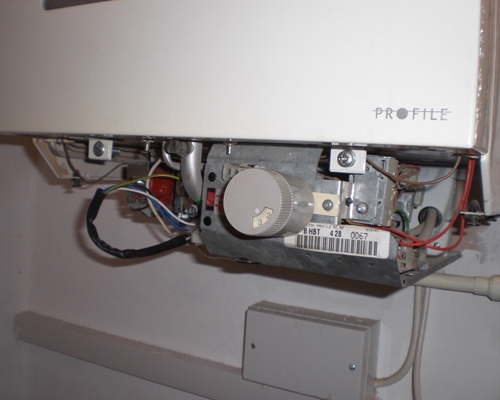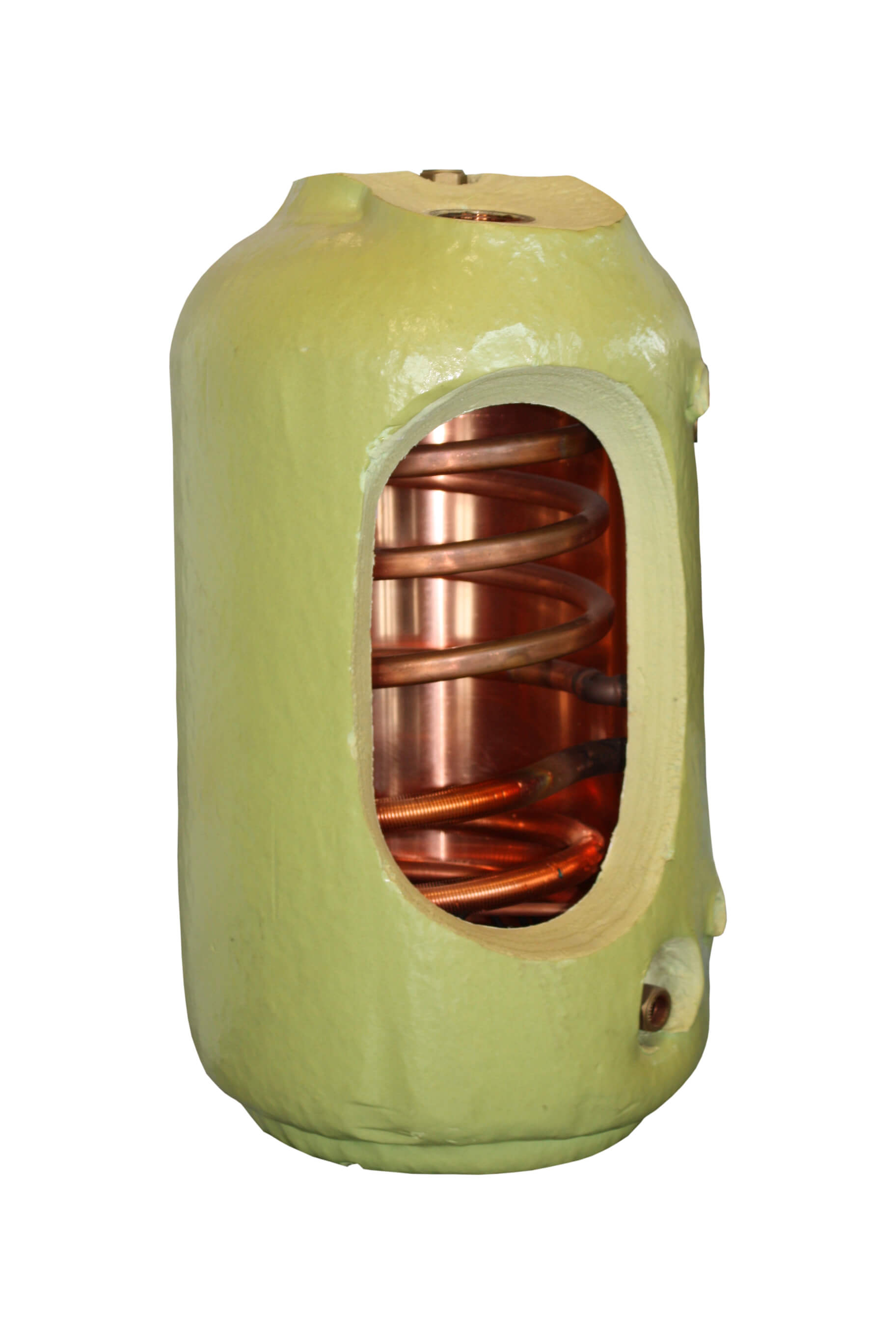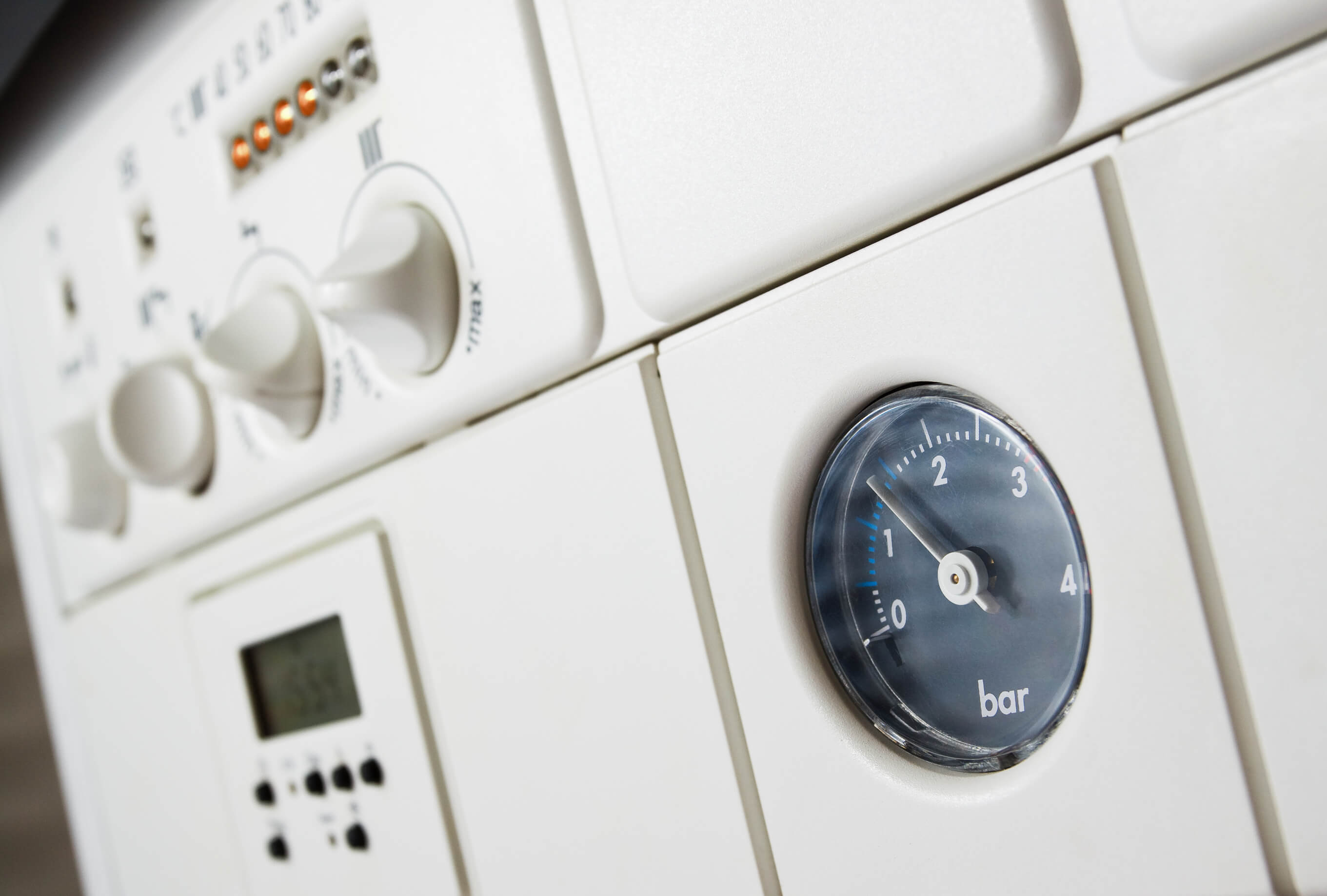Not all homes have a hot water cylinder, but if you live in a 1-bed or 2-bed house built before the 1980s, or a house with three beds or more, there’s a good chance you have one.
If you’re not sure, then finding out should be simple - your hot water cylinder should be mounted within a cupboard or closet within your home.
While many homes still feature conventional boiler systems with a hot water tank mounted in the airing cupboard, this isn’t the only place you might find it.
For example, if you have a new modern central heating system with a combi or system boiler, your hot water tank may be installed elsewhere, or you may not have one at all (in the case of a combi boiler).
In this article, we’re going to examine common hot water cylinder problems.
Common hot water cylinder problems
Hot water cylinders, aka hot water tanks, are workhorses that rarely show signs of serious problems.
However, many of the hot water tanks installed in houses throughout the 60s, 70s and 80s are becoming quite old now, and issues are becoming increasingly common.
Firstly, it’s important to understand what sort of system is installed in your home and what type of water tank you have.
You’ll have a hot water tank if your heating system is either:
- A traditional, or conventional system. In this case, you’ll probably have a tank in an airing cupboard, fed by a cold water tank in the loft.
- A system boiler, similar to a conventional system, but lacks the cold water gravity feed in the loft.

If you have a combi boiler, e.g. in a small house or flat, then you probably won’t have a hot water tank, or it won’t be accessible.
Then, hot water tanks are divided into two main types:
- Vented hot water tanks, which connect to the cold water feed in the loft. These distribute water around the house with the assistance of gravity. These are most common in conventional heating systems, and they look pretty simple - a large cylinder covered in insulative material.
- Unvented hot water tanks, which are used with system boilers. Instead, these don’t use cold water feeds, taking water directly from the mains supply.

Fundamentally, all hot water cylinders take on a similar role. They’re designed to take cold water, heat it up indirectly or directly, and provide that warm water to taps and showers.
In most situations, hot water tanks receive hot water from the boiler.
Currently, vented hot water tanks are still the most common option in the UK.
1: No hot water
All hot water tanks either heat water indirectly or directly. Direct heating hot water tanks are much less common and are generally installed when you don’t have a gas boiler.
In a direct heated hot water tank, there’s usually an immersion heater built-in to the hot water tank.
This heats the water without the use of a gas boiler. In this situation, you’ll need to check the hot water tank itself. Check whether it’s connected to the mains electricity and that there hasn’t been a power cut or breaker issue.
In an indirect heated hot water tank, water is warmed in the tank by hot water exiting your boiler. So, if there’s no hot water, you’ll need to check your boiler and pump.
First and foremost, check your thermostat and boiler controls - is the hot water timer set properly? Otherwise, there might be an issue with:
- Your system’s pressure. Check the boiler pressure gauge.
- Your plumbing, there might be an airlock.
- The boiler itself.
In these situations, call one of our heating engineers.
2: Low boiler pressure
If your heating system’s pressure drops, warm water may never make it to the hot water tank.
Secondly, hot water might not leave the hot water tank if your pump is malfunctioning. Check the pump mounted near the cylinder. It may need bleeding - it’s bled in a similar fashion to a radiator.
Low boiler pressure typically only applies to system and combi boilers. Conventional heating systems may also be pressurised, in which case, there will be a (typically red) expansion vessel fitted near the tank with a pressure gauge.

These boilers will have a pressure gauge mounted on the front. For most boilers, the ideal pressure is between 1 and 2 bar. The pressure can drop if you’ve recently bled your radiators, or if there’s a pinhole leak somewhere in the plumbing.
You can repressurise your boiler by allowing the system to fill with water from the mains supply, but you shouldn’t attempt this until you find the source of the problem.
3: An airlock in the pipes
Excess air and water vapour can cause an airlock, stunting the flow of hot water in your pipes.
Airlocks are fairly common in older conventional systems and less common in well-plumbed modern systems.
Airlocks might cause your taps to spit, hiss and splutter. In the worst case scenario, your hot water will stop flowing altogether.
Here’s a common DIY fix for airlocked pipes:
Step 1: Turn off your home’s mains water supply at the stopcock tap. This is usually found under the sink or in a utility room. You can also turn off the mains supply at the valve in the street - follow this guide by Thames Water.
Step 2: Turn on all your taps. Begin with your upstairs taps, then open your downstairs taps, including all toilet and bathroom taps. After a while, the water will stop.
Step 3: Continually flush toilets until there’s no water left.
Step 4: Starting upstairs again, turn your taps so they’re almost fully closed. However, water should still drip through.
Step 5: Switch your mains supply on.
Step 6: Gradually adjust the taps to halfway, then fully open after around 5 to 10 minutes.
This should force trapped air and vapour from the system. You can also try bleeding your radiators one by one, though this won’t necessarily fix an airlock if it’s contained within the pipes.
Call us if you’re not confident about doing this.
4: Frozen condensate pipe
This is an easy one. In winter, heating problems are sometimes caused by a frozen condensate pipe. The condensate pipe’s function is to drain acidic wastewater from the boiler.
The pipe is often mounted on an outside wall near the boiler, and if it freezes, your boiler and/or hot water will likely stop working properly. If you have a modern boiler, it may display an error message to indicate a problem with the condensate pipe.
To defrost the pipe, gently pour hot water over it.
5: No water at all
If your taps stop working entirely, check your stopcock and mains valve to ensure they’re turned to the correct position. Ask your neighbours to see if they’re experiencing the same problem, signalling an issue with your supplier.
If you have a gravity-fed system with a cold water feed in the loft, check the cistern to see if it’s empty. If it’s full, your pipes may be airlocked. Give the ball valve a wiggle by gently pulling the float arm. If this is the source of the problem, the cistern will start to refill.
6: Water is too hot
If your hot water is alarmingly hot or almost steaming, then the solution depends on your boiler or hot water cylinder.
- System and combi boilers often have a hot water temperature setting. Ensure this is set correctly.
- In an conventional unvented hot water cylinder, there may be an issue with your temperature pressure relief valve.
- The hot water cylinder should be fitted with a thermal shut-off switch, mounted on its outside. This may be malfunctioning.

If your hot water is very hot indeed, call a heating engineer as soon as possible. In an emergency, shut off the water to your house via the external mains valve mounted somewhere outside your home.
7: Water is discoloured or smelly
If both the cold and hot water taps produce smelly or discoloured water, there’s likely a wider issue with your plumbing, or an external issue with the supplier.
Blue, green or turquoise water is likely caused by limescale, orange or brown by rust, and white or creamy water by excessive chalk. Ask your neighbours if they’re experiencing the same thing to clarify, and check your with your supplier.
If the issue originates only from your hot water taps, you might have an issue in your hot water system.
Heater tanks are typically installed with an anode rod designed to attract various corrosive elements. This may have become overly corroded or worn, in which case it needs replacing. Alternatively, your tank could be full of corrosion and sediment, in which case it needs to be flushed or replaced.
You can try leaving your hot water taps on full-blast for 5 to 10 minutes to see if that solves the issue. If not, call a plumber or heating engineer.
8: Leaky cylinder or pipes
Leaky cylinders or pipes can wreak havoc with your hot water supply.
You should address any leaks in your system as soon as possible. Fixing small pinhole leaks is reasonably straightforward. More serious leaks emanating from the cylinder warrant professional attention.
9: Strange noises
Heating systems are noisy, and your hot water tank will probably make some level of noise, particularly when your system is working hard in the cold winter.
However, any thunderous thumping, gurgling or sizzling sounds may warrant attention, particularly if they present with new or worsening heating issues.
How to prevent hot water cylinder problems
There’s no better way to prevent hot water cylinder problems than by servicing and maintaining your system regularly - preferably every year or two.
While hot water cylinders are exceptionally durable, many installed across the UK are now approaching the end of their lifecycle. Fortunately, most hot water cylinders are relatively cheap and easy to replace, especially in conventional systems.
If you’re unsure how to fix your heating problem, book one of our heating engineers today.






